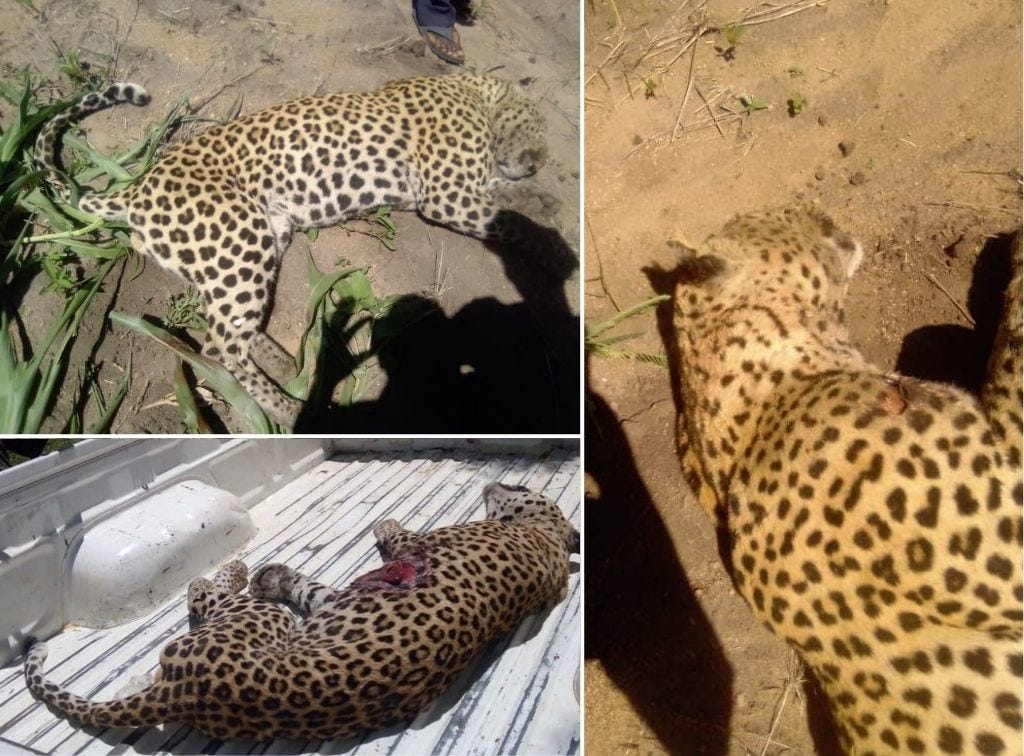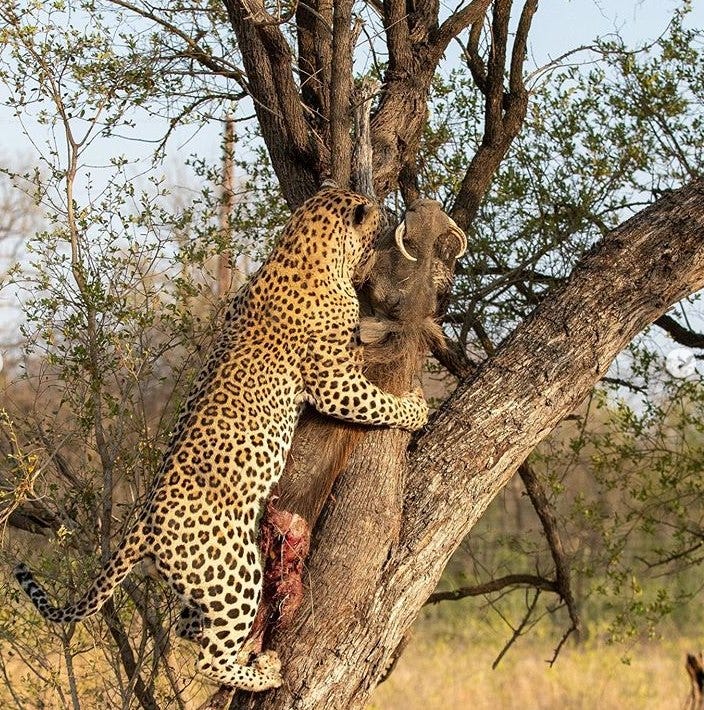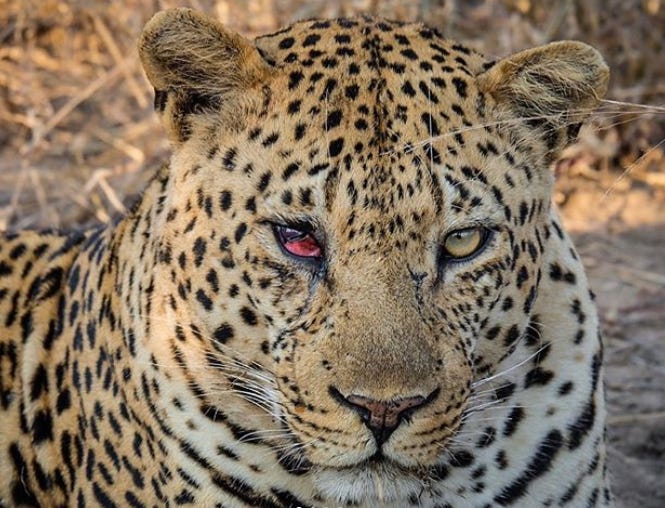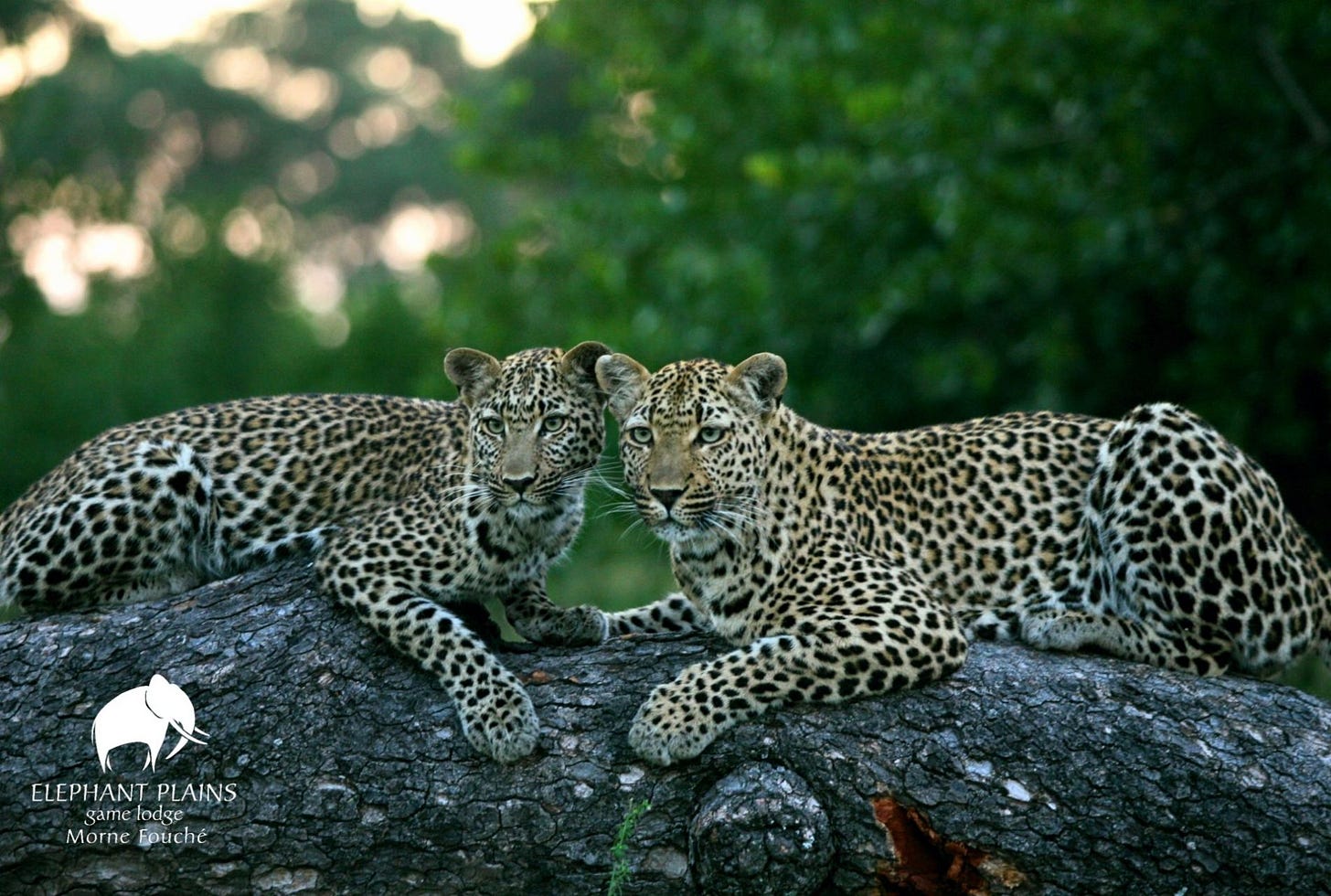Hello 👋,
The Building Block community added 4 new members this week. Welcome! Not subscribed yet? Join us! And if you’re on Twitter, please connect with me at @robsturge.
My wife and I fell in love with WildEarth online safaris during the lockdowns. They broadcast daily game drives in Africa with knowledgeable rangers that you can enjoy online from the comfort of your home. Apart from the interesting facts you learn about flora and fauna, you also get to follow the lives of the animals. This is different from holiday visits to nature reserves where you can marvel at the splendour of an animal in real life, but you usually don’t have perspective on the moment in the animal’s life in the broader context.
One of the animals we met was Hukumuri, a leopard. In today’s edition, I’m sharing Hukumuri’s story.
Get your Friday morning (almost weekend) cup of coffee ☕️ ready, and enjoy this week’s edition.
The beginning
Hukamuri was born in 2012 in the south-east of the Kruger National Park near Crocodile Bridge. He is thought to be the son of the Gomondwane male who ruled a kingdom in the Lower Sabie area.
Leopards are solitary animals with differences in the territorial habits of males and females. Territorial disputes are limited to members of the same sex. Males have larger territories, usually covering several female territories. Young females “leave the nest” earlier than males, usually establishing a territory near that of their mothers. A male seeks independence slightly later at around 2.5 years of age, usually chased out of the territory by his father. From this point onwards, the leopard embarks on a solitary journey to find his own kingdom.
The same is true for Hukumuri who was banished from his homelands as a youngster and had to venture into the unknown to establish his own territory. This saw young Hukumuri trek over 100km to the Sabi Sands concession.


Hukumuri’s rise to dominance
It was at Sabi Sands in 2017 that Hukumuri came into his own. Here he marked his dominance by driving out Tingana, the resident male. Leopards have been known for developing specialist hunting skills, and Hukumuri built a reputation as a specialist in hunting warthogs.
But life was not all plain sailing for Hukumuri who had to fight off not only hyenas and lions, but also rival leopards. In 2019, in what is believed to have been a titanic battle with Anderson (another male leopard), Hukumuri severely damaged an eye. He had won the battle, but it scarred Hukumuri for life.
His eye healed aesthetically (marginally), but it left him partially blinded. But despite his disability, he remained a specialist warthog slayer and king of his domain.
Hukumuri finds love
His pirate eye gave him a bad-boy edge, making him a hit among the laydeeez. Although he adopted polygamous African traditions, it was Xidulu (allegedly his nemesis Anderson’s daughter) that stole his heart.
Every good story has a love scene, so dim the lights and put on some Luther Vandross (Endless Love). Here’s our man and Xidulu in action:
They had a daughter, Cara, together. Here is a pic of Xidulu and Cara.
Hukumuri’s downfall
But in the face of never-ending challengers, the sunset of the king’s reign became inevitable. The battle scars became all too frequent.
In the end, it was the Tortoise Pan male, a remarkable specimen, that dethroned Hukumuri. As was the case when Hukumuri was a youngster, he was again banished from his home. To make matters worse, the Tortoise Pan male has recently been spotted with Hukumuri’s beloved Xidulu.
The final conflict
Sadly, this time, Hukumuri ran out of space and another epic journey wasn’t to be. He moved north into the Manyeleti Game Reserve, where he was progressively pushed into the Manyeleti fenceline next to Seville, a small village. Here, he wreaked havoc, killing goats, pigs and even a dog - pretty much wiping out the life savings of one of the villagers.


To worsen matters, it is the young children in villages such as Seville that tend to the livestock, so it was only a matter of time until the situation unfolded in human tragedy. The Seville community handled the situation as best they could and reported it to the Mpumalanga Parks and Tourism Authority (MPTA). Hukumuri posed a significant threat to the community, and considering that he had already been pushed out of his territory, he could not be relocated. Based on expert accounts, the rangers had had no other option.
On 16 January 2021, Hukumuri was shot and killed. His journey had come to an end. He was 9 years old.

Parting thoughts
Hukumuri’s journey reminds me of the beauty and harshness of nature. The struggle for existence is a never-ending competition where only the strongest and fittest survive. It also made me rethink the complex challenge of protecting the world’s magnificent natural heritage, whilst advancing human prosperity. Hukumuri’s life ended in the most unfortunate way, but ultimately, he crossed paths with a stronger and fitter species with its own interests to protect.
Over 2 million people live in the most basic of conditions in rural villages along the 700km border of the greater Kruger National Park in South Africa. Yet, only a few metres away, across the fence, animals roam free on large plots of land, admired by tourists staying at luxurious lodges. This poses an understandable climate for human-wildlife conflict. The communities and conservationists should be celebrated for the relative peace that has been maintained under these circumstances.
RIP Hukumuri. Your life inspired joy and learning.
References
I compiled this story from multiple sources and I stumbled upon wonderful blogs, articles and videos in doing so. If you’d like to read more, here are my main references:
Africa Geographic: The Death of Hukumuri
Africa Geographic: The African Leopard: Silent, secretive and full of surprises
Africa Geographic: Compensation for damage-causing animals near Kruger NP
Londolozi blog: How do Leopards Choose Their Territories?
Londolozi blog: Has the Hukumuri Male Lost an Eye?
Silvan Safari Blog: The passing of a Sabi Sand legend
PaintedDog TV: Hukumuri & Human-Wildlife Conflict Panel Discussion
Thanks for tuning in. Have a great weekend!










A poignant tale of the conflict between nature and man. Thanks
Thanks for this, Robert. I thoroughly enjoyed this well researched, beautifully put together piece.